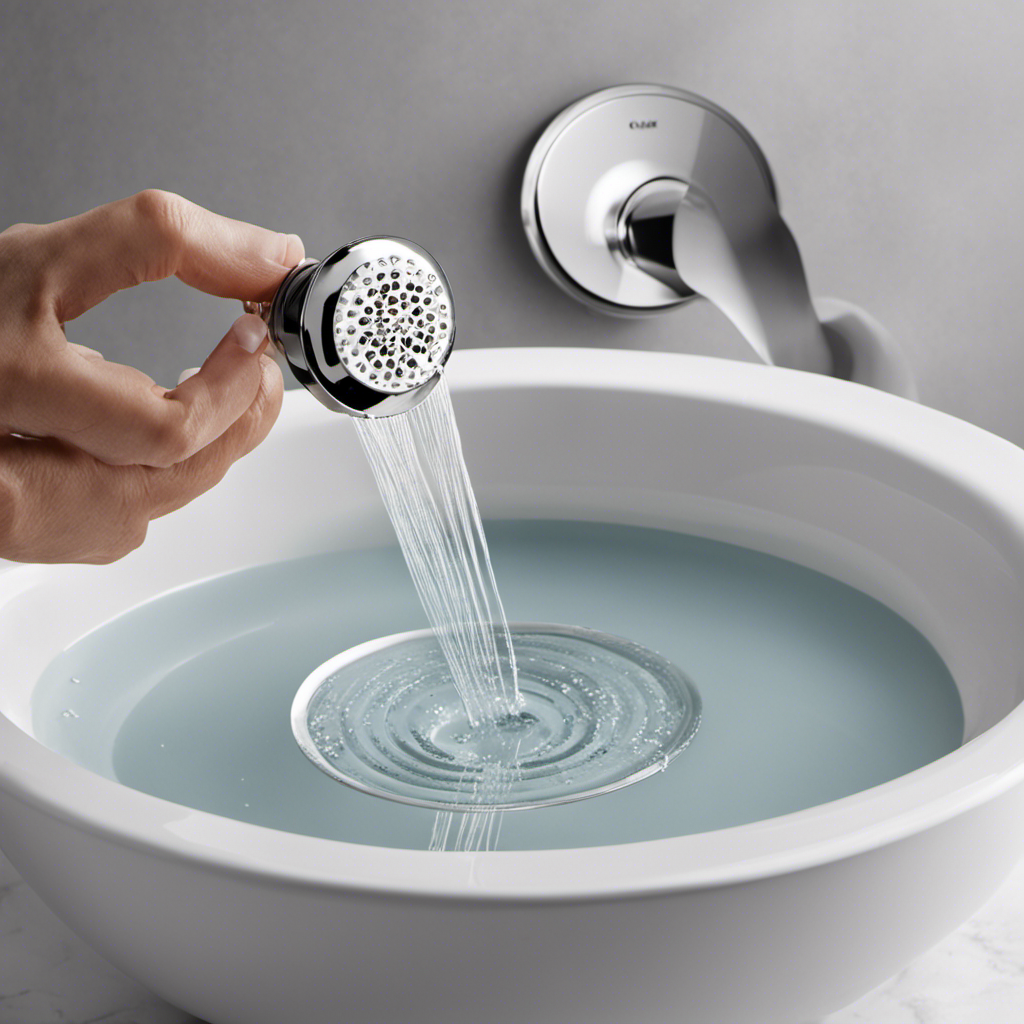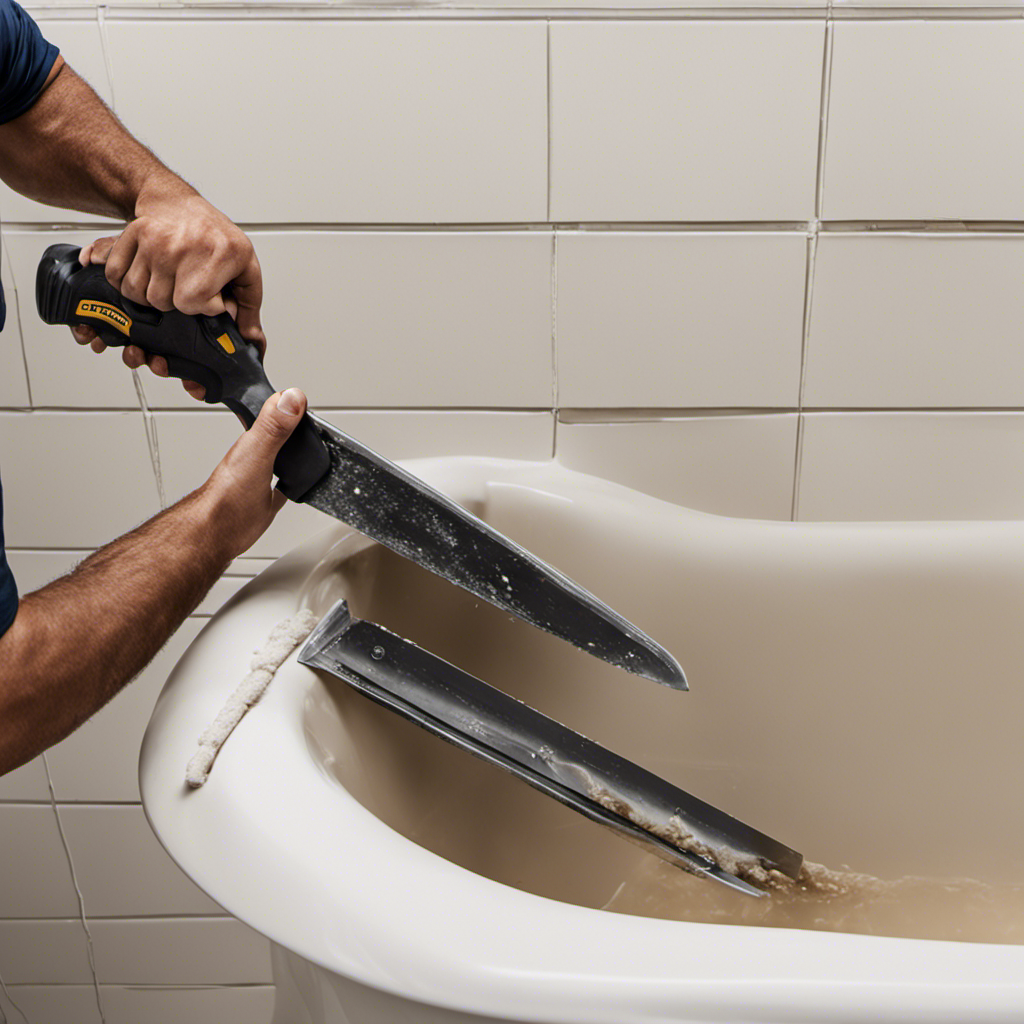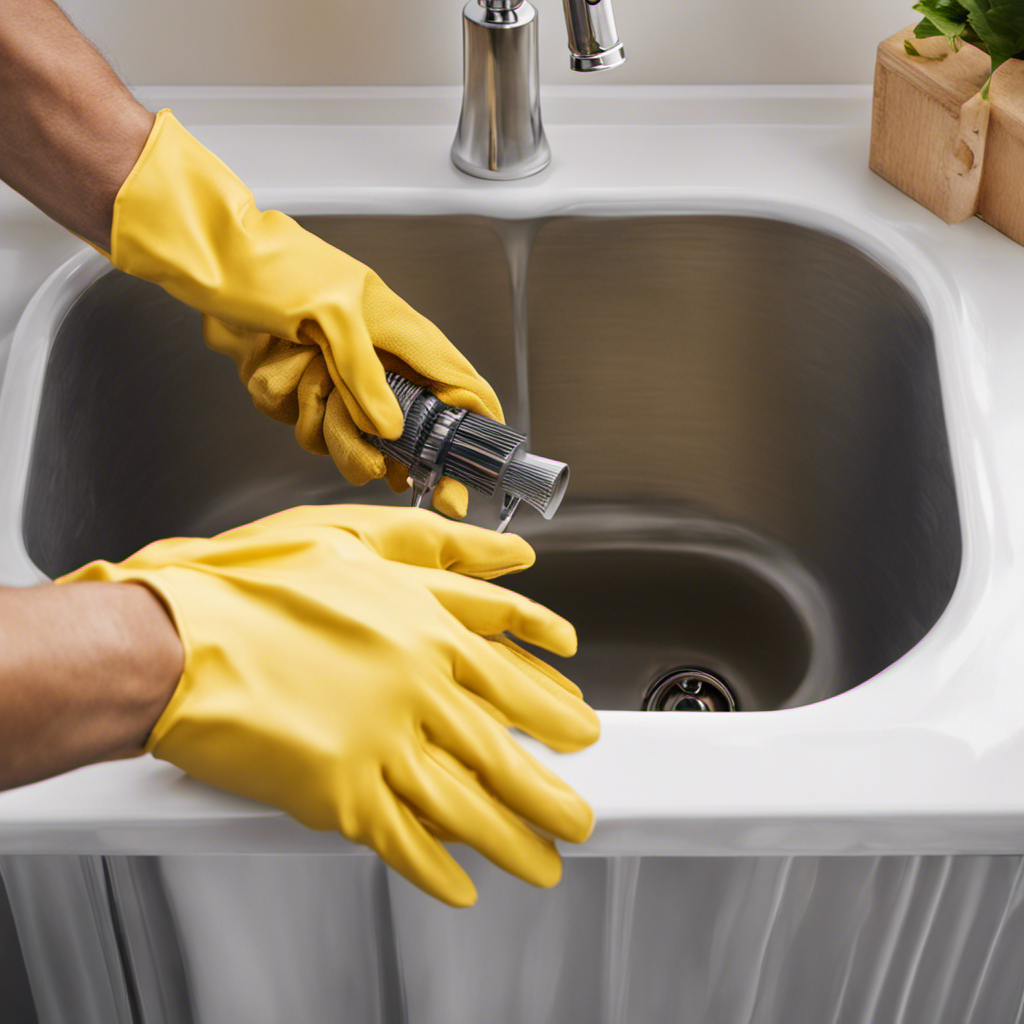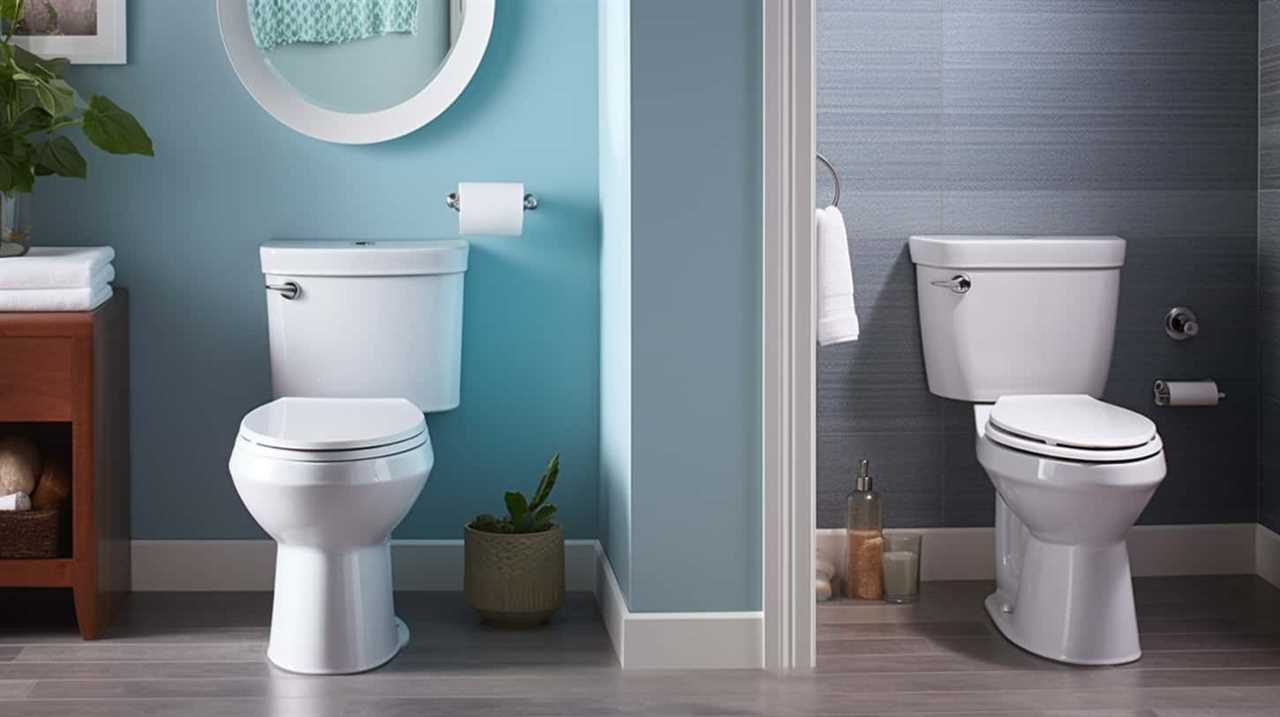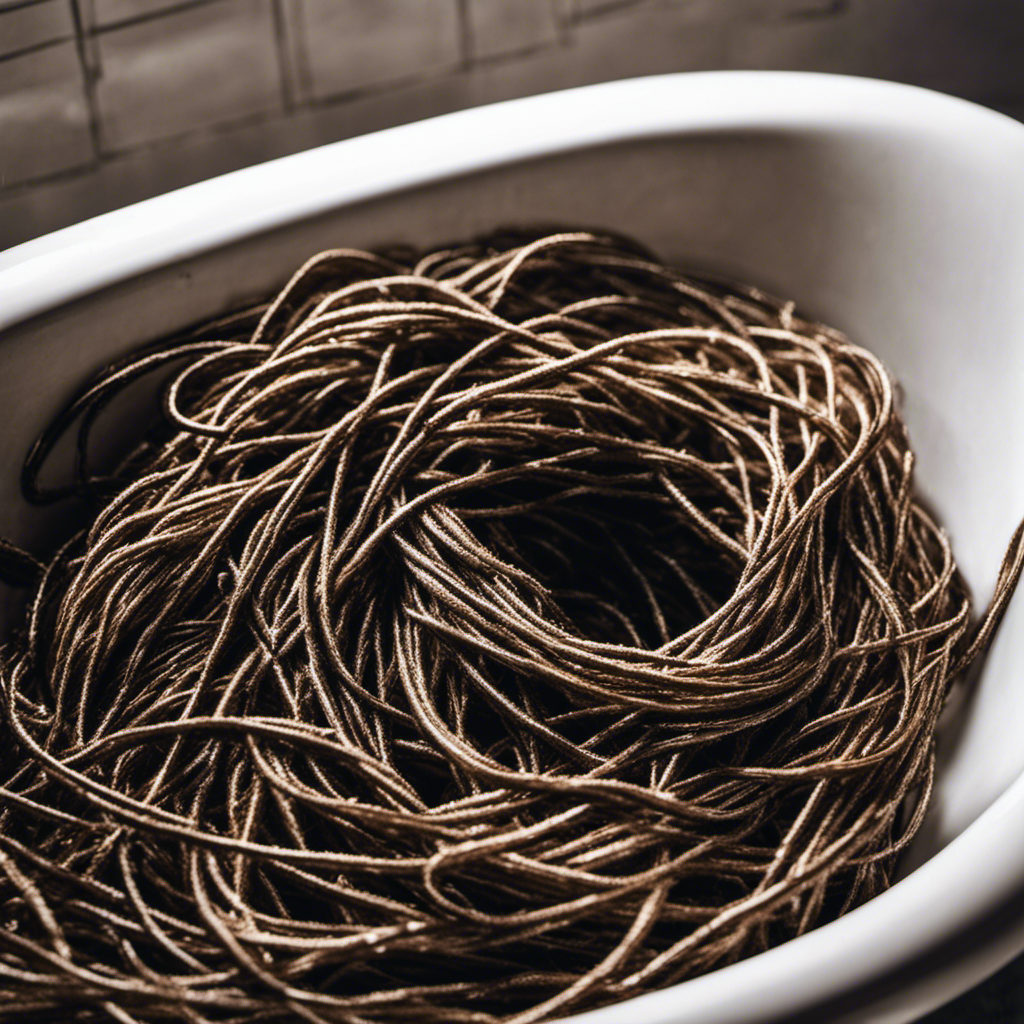So, you’ve noticed that your bathtub drain is not flowing as smoothly as it used to. Don’t worry, I’ve got you covered! In this article, I’ll show you how to clean a bathtub drain with a push plug.
It’s a simple yet effective method that will have your drain running like new in no time. With just a few tools and a little bit of elbow grease, you’ll be able to remove any clogs and get your drain back to its optimal performance.
Let’s dive in!
Key Takeaways
- The tools required for cleaning a bathtub drain with a push plug include needle-nose pliers, a screwdriver, a flashlight, and a drain snake or wire hanger.
- Removing the push plug involves gently pulling it out with fingers, troubleshooting potential drain issues, using a plunger or drain snake to unclog the drain, and unscrewing the overflow plate to remove the push plug mechanism.
- Cleaning the push plug requires twisting it counterclockwise to remove, inspecting and cleaning it with warm soapy water, scrubbing away stubborn grime or buildup, rinsing it with clean water, and drying it completely.
- Clearing debris from the bathtub drain can be done by checking for obstructions, using a plunger or drain snake to dislodge the debris, pouring a mixture of baking soda and vinegar down the drain, and emphasizing the importance of clearing debris to prevent future clogs.
Tools Required for Cleaning a Bathtub Drain
To clean a bathtub drain with a push plug, you’ll need a few tools.
Bathtub drain maintenance is essential for preventing clogs in bathtub drains.
The first tool you’ll need is a pair of needle-nose pliers. These pliers will help you remove any hair or debris that may have accumulated in the drain.
Next, you’ll need a screwdriver to unscrew the drain cover.
Once the cover is removed, you can use a flashlight to inspect the drain and identify any clogs.
Finally, you’ll need a drain snake or a wire hanger to manually remove any stubborn clogs.
Removing the Push Plug From the Bathtub Drain
Removing the push plug from the tub’s drain can be easily done by gently pulling it out with your fingers.
However, before attempting to remove the push plug, it is important to troubleshoot any potential issues with your bathtub drain. The most common problem is a clogged drain, which can cause water to back up and prevent the push plug from functioning properly.
To unclog a bathtub drain, you can try using a plunger or a drain snake. If these methods don’t work, you may need to remove the push plug and clean the drain manually. This involves unscrewing the overflow plate and pulling out the push plug mechanism.
Once removed, you can use a drain brush or a mixture of vinegar and baking soda to clean the drain thoroughly. Remember to reassemble the push plug correctly before using your bathtub again.
Cleaning the Push Plug
Before starting, make sure all components are disconnected and the area is well-ventilated. Cleaning the push plug is an important step in maintaining a clear and functional bathtub drain. To avoid common mistakes, such as damaging the plug or causing further clogs, follow these steps:
- Remove the push plug from the drain by twisting it counterclockwise.
- Inspect the plug for any hair or debris and clean it thoroughly with warm soapy water.
- Use a small brush or toothbrush to scrub away any stubborn grime or buildup.
- Rinse the plug with clean water and dry it completely before reattaching it to the drain.
If you prefer not to remove the push plug, there are alternative methods for unclogging a bathtub drain. These include using a drain snake or pouring a mixture of baking soda and vinegar down the drain to dissolve the clog. However, keep in mind that these methods may not be as effective as removing the push plug and cleaning it directly.
Clearing Debris From the Bathtub Drain
Make sure you check for any debris or obstructions in the bathtub drain. This step is crucial in preventing future clogs and maintaining a properly functioning drain.
To clear any debris, you can use a variety of alternative methods. One effective method is using a plunger. Simply place the plunger over the drain and create a strong seal. Then, vigorously push and pull the plunger to create suction and dislodge the debris.
Another option is using a drain snake. Insert the snake into the drain and twist it to catch and remove any obstructions.
If these methods don’t work, you can try using a mixture of baking soda and vinegar. Pour this mixture down the drain and let it sit for about 15 minutes before flushing with hot water.
These alternative methods can help clear a clogged bathtub drain and prevent future issues.
Reinstalling the Push Plug and Testing the Drain
To reinstall the push plug and test the drain, you’ll want to carefully align the plug with the drain hole and firmly push it down until it clicks into place.
Before doing so, it’s important to troubleshoot common issues with bathtub drains to ensure proper functionality. Start by checking for any debris or hair clogs that may obstruct the drain. Use a drain snake or plunger to remove any blockages.
Once the drain is clear, inspect the push plug for any damage or wear. If needed, replace it with a new one. When reinstalling, make sure the plug is aligned correctly with the drain hole to prevent leaks.
Conclusion
In conclusion, cleaning a bathtub drain with a push plug is a simple yet effective way to maintain a clog-free drain. By using the right tools and following the steps outlined in this article, you can easily remove and clean the push plug.
Next, clear any debris from the drain and reinstall the plug to ensure proper drainage. Taking care of your bathtub drain not only prevents clogs but also promotes a clean and hygienic environment for a relaxing bathing experience.
So, don’t let the drain become a burden. Take charge and keep it flowing smoothly.
